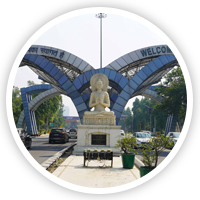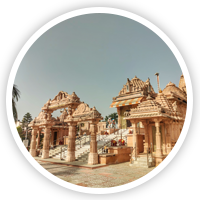
Muslim Weddings and Their Beautiful and Cultural Rituals!
Every Wedding of any culture is considered one of the most important moments in someone’s life. Muslim weddings are one of the old cultures which are filled with great rituals. As an event planner, one must have correct knowledge and information about all of the cultures in the world. In the 3rd Episode of WedBlogs, IEM has presented some facts about traditional Muslim weddings. What are the important details of Muslim weddings, and how are these rituals performed? Upgrade your knowledge with our series of #WedBlogs and convert yourself into a perfect Event and Wedding Planner.
Salatul Ishtikara
This is a pre-wedding ritual in which the Imam performs a prayer to seek Allah’s blessings for the marriage. This ritual is basically an official announcement of the marriage.
Imam Zamin
This follows the Salatul Ishtikara. It involves a visit from the groom’s mother to the bride’s home. She brings gifts and sweets and an ominous gold coin, or silver. It is wrapped in a silk scarf and tied around the wrist of the bride, marking her formal welcome and acceptance into the new family.
Mangni
We all know mangni is the engagement. Close friends and relatives come together to witness the ring exchanging ceremony. Both families shower each other with gifts. This is the public declaration of the betrothal of the bride and groom.
Manjha
Manjha is the Muslim marriage equivalent of the Haldi ceremony. It takes place two days before the wedding. The bride and groom wear yellow clothing in their respective homes and get smeared with a paste of turmeric and sandalwood in rosewater. There are some celebrations that are being followed, and then they are bathed in holy water. They are not supposed to leave their respective homes until the marriage day.
Mehandi
The mehndi is a very important ritual in a Muslim wedding. The women of the bride’s family and her female friends gather together. A professional or relative good at mehndi application draws beautiful and newest bridal mehndi designs on the bride’s hands and feet. The groom’s initials are hidden in the design and he has to find them on the wedding night.
Sanchaq
The male members of the groom’s family visit the bride’s family with gifts including sweets, a bridal outfit with accessories, and jewelry. This is the last pre-wedding ritual, signifying the blessing, affection, and support of the male members of the bride’s new home.
Baraat
The most exciting event of the wedding day is the entry of the baraat. The groom uses a beautifully decorated car to reach the wedding venue. He is escorted by his relatives and mostly male friends. A family member of the bride goes to escort him. It is a splendid, loud procession, declaring that the wedding is going to happen in a few hours.
Welcome
The bride’s family receives the groom at the wedding venue. He is served a cool drink that he has in the company of the bride’s brother or closest brother figure. They spray ittar or rose water on the groom, and around him to create a beautiful path for him to enter.
Nikah
This is the primary wedding ritual performed by a Maulvi. The men sit around the groom and the women sit around the bride. The bride’s father is the Wali of the bride. The groom’s family offers Mehr to seek her consent. Prayers from the Quran are recited by the Maulvi.
The Ijab-e-Qubool is the most pivotal Muslim wedding ritual. The bride and groom are kept separate from each other. The Maulvi asks both of them to consent, and they have to say “Qubool Hai” thrice to give their consent. This is similar to the Christian “I do”, only. The bride and groom have to say it thrice and they are behind a hijab that separates them from each other during the process.
This is followed by Nikah Nama. This is the official marriage contract where the duties of the groom and the bride, as per the Quran, are recited in presence of two witnesses each from the bride’s and groom’s families. After the official marriage is signed, a Khutba is recited, followed by the marriage vows in the Quran. In the end, the elders perform durud, or blessing on the new bride and groom.
The Ijab-e-Qubool is the most pivotal Muslim wedding ritual. The bride and groom are kept separate from each other. The Maulvi asks both of them to consent, and they have to say “Qubool Hai” thrice to give their consent. This is similar to the Christian “I do”, only. The bride and groom have to say it thrice and they are behind a hijab that separates them from each other during the process.
This is followed by Nikah Nama. This is the official marriage contract where the duties of the groom and the bride, as per the Quran, are recited in presence of two witnesses each from the bride’s and groom’s families. After the official marriage is signed, a Khutba is recited, followed by the marriage vows in the Quran. In the end, the elders perform durud, or blessing on the new bride and groom.
Arsi Mushraf
The bride and groom finally look at each other that too, through a mirror kept in between them. This is after the wedding, but still a part of wedding rituals.
Rukhsat
This is the first post-wedding ritual. The bride waves goodbye to her family. It is obviously an emotional moment. But, when the bride arrives at her new home, she is received with a warm welcome by her mother-in-law. The Holy Quran is placed on the bride’s head to symbolize her duties as a wife.
Waalima
This is the public declaration that the marriage is done. This is basically the reception party. The bride and groom are treated royally. The bride is introduced to the members of the groom’s extended family, relatives, and friends. There are gifts, a lavish spread, and fun and dancing.
Chauthi
On the fourth day of the wedding, the bride and groom visit the bride’s family. The bride’s family greets the groom with a lot of affection and gifts. There is a lavish spread and a lot of gifts for the bride and the groom from the bride’s family. This marks the end of all formal Muslim wedding rituals between the two families.
If you are really into event management and want to try it, the IEM-Institute of Event Management is the Best Event Management which provides a vast study structure in events, practical training, workshops, and internships. Get a free counseling session, which will help you solve your career-related doubts. Also to learn about the full details of Hindu wedding rituals, get enrolled in the Wedding Planning courses provided by IEM.
For more information you can call us at 0522-2396988, 8077626751 / Visit us: 2/156, Vivek Khand 2, Gomti Nagar Lucknow, Uttar Pradesh, India 226010 or Follow us: https://linktr.ee/instituteofeventmanagement
If you are really into event management and want to try it, the IEM-Institute of Event Management is the Best Event Management which provides a vast study structure in events, practical training, workshops, and internships. Get a free counseling session, which will help you solve your career-related doubts. Also to learn about the full details of Hindu wedding rituals, get enrolled in the Wedding Planning courses provided by IEM.
For more information you can call us at 0522-2396988, 8077626751 / Visit us: 2/156, Vivek Khand 2, Gomti Nagar Lucknow, Uttar Pradesh, India 226010 or Follow us: https://linktr.ee/instituteofeventmanagement








